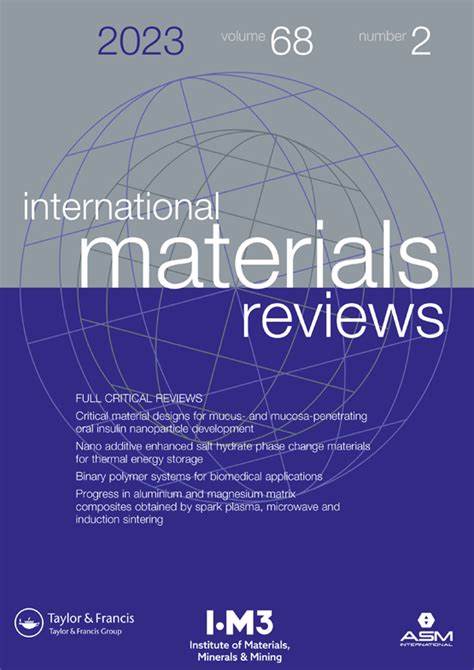Functional liquid crystalline epoxy networks and composites: from materials design to applications
IF 15.5
1区 材料科学
Q1 MATERIALS SCIENCE, MULTIDISCIPLINARY
引用次数: 6
Abstract
ABSTRACT Liquid crystalline epoxy networks (LCENs) are a class of materials that combine the useful benefits of both liquid crystals and epoxy networks exhibiting fascinating thermal, mechanical, and stimuli-responsive properties. They have emerged as a new platform for developing functional materials suitable for various applications, such as sensors, actuators, smart coatings and adhesives, tunable optical systems, and soft robotics. This article provides an overview of LCENs and their composites as functional materials, including their synthesis and characterisation, focusing on structure-processing–property relationships. We provide objective analyses on how materials engineers can use these relationships to develop LCENs with desired functionalities for targeted applications. Emerging areas, including advanced manufacturing and multi-functional design of LCENs are covered to show the overall progress in this field. We also survey the forward-looking status of LCEN research in designing novel materials for future technologies.功能性液晶环氧树脂网络和复合材料:从材料设计到应用
液晶环氧树脂网络(LCENs)是一类结合了液晶和环氧树脂网络的有用优点的材料,具有迷人的热、机械和刺激响应性能。它们已经成为开发适用于各种应用的功能材料的新平台,例如传感器,执行器,智能涂层和粘合剂,可调光学系统和软机器人。本文综述了LCENs及其复合材料作为功能材料的研究进展,包括它们的合成和表征,重点介绍了结构-加工-性能关系。我们就材料工程师如何利用这些关系开发具有目标应用所需功能的LCENs提供了客观的分析。包括先进制造和多功能设计在内的新兴领域,展示了该领域的总体进展。我们还调查了len研究在为未来技术设计新材料方面的前瞻性地位。
本文章由计算机程序翻译,如有差异,请以英文原文为准。
求助全文
约1分钟内获得全文
求助全文
来源期刊

International Materials Reviews
工程技术-材料科学:综合
CiteScore
28.50
自引率
0.00%
发文量
21
审稿时长
6 months
期刊介绍:
International Materials Reviews (IMR) is a comprehensive publication that provides in-depth coverage of the current state and advancements in various materials technologies. With contributions from internationally respected experts, IMR offers a thorough analysis of the subject matter. It undergoes rigorous evaluation by committees in the United States and United Kingdom for ensuring the highest quality of content.
Published by Sage on behalf of ASM International and the Institute of Materials, Minerals and Mining (UK), IMR is a valuable resource for professionals in the field. It is available online through Sage's platform, facilitating convenient access to its wealth of information.
Jointly produced by ASM International and the Institute of Materials, Minerals and Mining (UK), IMR focuses on technologies that impact industries dealing with metals, structural ceramics, composite materials, and electronic materials. Its coverage spans from practical applications to theoretical and practical aspects of material extraction, production, fabrication, properties, and behavior.
 求助内容:
求助内容: 应助结果提醒方式:
应助结果提醒方式:


